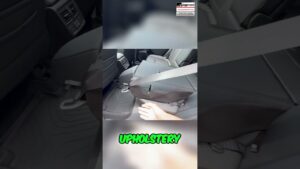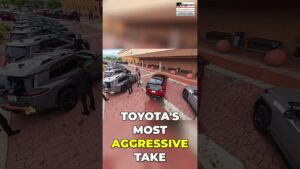Alan Shaw came to Chicago last week casting himself as a reformer.
At a Midwest shippers meeting, the Norfolk Southern chief executive promised to deliver resilience and growth, and to step back from the Wall Street-inspired job cuts that helped hogtie the nation’s railroads during the COVID-19 pandemic.
Advertisement
But Shaw had to share the spotlight with another nagging problem: the railroad’s stalled campaign to double the size of what is already its biggest intermodal freight yard at 47th Street and the Dan Ryan Expressway.
An hour before he spoke Wednesday, Ald. Jeanette Taylor, 20th, blocked a City Council vote on the $150 million expansion yet again.
Advertisement
A day later, one of the country’s most influential federal railroad regulators called out Norfolk Southern and its peers for failing to grow during the last 15 years, and thereby, allowing pollution-spewing trucks to carry more freight.
The turbulent week stands as an apt metaphor for the state of the nation’s railroads, and the role of Chicago and its suburbs as the biggest freight hub. They’re key battlegrounds as the U.S. struggles to decide what sustainable growth means, and whether it’s possible.
“This has been a theme forever and ever,” said Tracy Robinson, chief executive of Canadian National Railway. “The railroads come into an area, and the community builds up around them, and then we have trouble living together.”
Robinson spoke at the shippers conference in the west suburb of Lombard, where she described the Chicago area as “the center of railroading.”
Norfolk Southern portrays the expansion of its 170-year-old Englewood yard as a badly needed infusion of jobs and investment in inner-city Chicago.
But by demolishing hundreds of homes, and subjecting people who remain to a rising tide of congestion and truck pollution, the railroad sparked protests, lawsuits and bruised feelings.
Taylor said she expects an agreement will be reached with Norfolk Southern and the vote to proceed when the City Council meets Feb. 1, just weeks before Chicago elects a new mayor and City Council.
“This is a $59 billion company,” Taylor said, referring to the value of the railroad’s stock. “They displaced 400 families. The community has a right to say they want access to those jobs, and to be able to get those contracts, and I’m gonna make sure that happens.”
Advertisement
Norfolk Southern began buying property for the expansion soon after the 2008 financial collapse.
The 15-year saga raises ongoing questions about whether the railroads will be able to expand in communities where they operate now, and know how to, even if they break with the cost-cutting ethos on Wall Street.
For Marty Oberman, chairman of the federal Surface Transportation Board, the key to unlocking Chicago congestion is money. He said the railroads — at a time of soaring profits — just don’t spend enough.
A former Chicago alderman and Metra chairman, Oberman said the city took an important step in 2003 by organizing a public-private partnership called CREATE (Chicago Region Environmental and Transportation Efficiency Program) to address congestion.
The group is spending $380 million for a bridge near 75th Street and Damen Avenue in West Englewood so dozens of daily Metra and freight trains, along with cars, trucks and pedestrians, don’t have to take turns before passing through.
After nearly two decades ending in 2021, CREATE had raised $1.6 billion of the $4.6 billion it needs to complete 70 targeted projects. The railroads contributed just a quarter of the amount raised, Oberman said. The rest came from federal, state and city funds.
Advertisement
“As a taxpayer, I find this frustrating,” Oberman said in an interview. “These projects benefit the public but they also definitely benefit the railroads. So they can and should be contributing a larger share.”
Shaw’s newfound reticence about cutting jobs may sound like common sense to many people. But when he presented this idea to investors last month, Trains magazine columnist Bill Stephens wrote that he deserved a standing ovation.
That’s because, for the last decade, the strategic thinking of U.S. railroads has been dominated by a concept called “precision scheduled railroading.”
This approach means driving operating costs as a percentage of revenue as low as possible.
The seven big railroads in the U.S. cut 29,000 jobs, or about a fifth of their workforce, between January 2016 and February of 2020, according to a speech by Oberman in November.
This was just before COVID-19 created chaos in global supply chains. The railroads kept cutting even then. By the end of 2021, they eliminated another 13,271 jobs, Oberman said.
Advertisement
This second tranche of cuts saved about $4.8 billion in labor costs. But as they were occurring, during the height of the pandemic, the railroads spent nearly $60 billion on share buybacks and dividends, Oberman said.
In the meantime, he said, their service was “falling off a cliff.”
Oberman used one main measure of the service crisis in his speech. In what are known as “embargoes,” railroads can decide — often at the last minute — to withhold service to specific customers for a period of days or weeks.
These are mostly aimed at small- and mid-size shippers, not at industry giants such as J.B. Hunt and Hub Group, which in turn cater to big retailers such as Walmart.
The railroads announced 140 embargoes in 2017, Oberman said. In the first nine months of 2022, they declared 1,115.
The situation got so bad that in June, Oberman and the transportation board ordered Union Pacific to run grain trains to one of the West Coast’s biggest poultry producers. Foster Farms, based in Livingston, California, was on the verge of euthanizing millions of starving chickens.
Advertisement
It wasn’t just chickens that suffered, Oberman said. The U.S. may have lost out on hundreds of billions of dollars in economic activity, he said, adding that it’s hard to be precise.
And because container shipments over 500 miles were growing 20% faster on trucks than on railroads, many additional tons of carbon dioxide were released into the atmosphere, Oberman said.
Oberman said he’s contemplating tighter regulatory controls on embargoes, especially when they result from excessive job cuts.
But he also acknowledged a recent “evolution” on Wall Street, one that provides more support for long-term investments in railroad labor and equipment.
He said he’s encouraged by Shaw’s promise to not be so quick to lay off workers when sales slump.
He praised chief executives at BNSF, CSX and Canadian National for making similar statements. He hasn’t heard the same, he said, from Union Pacific.
Advertisement
In his December speech, Shaw reassured Wall Street that Norfolk Southern has plenty of thrift left in its corporate DNA.
He also tried to convince investors that job cuts can be penny-wise and pound-foolish.
Shaw offered this example: The railroad could save about $35 million a year by cutting 5% of its engineers and conductors when sales slump. But lately, he said, only 45% of furloughed workers return when the economy improves.
At that point, Shaw said, Norfolk Southern would have to spend $10 million to recruit and train replacements. The railroad could also incur $760 million a year in elevated operating costs and missed revenue opportunities, he said. “For us, resilience is an investment in long-term shareholder value,” Shaw said.
But being rooted in dense population centers on the East Coast and in Chicago means it’s hard for the railroad to enlarge its physical footprint.
Even though Norfolk Southern started buying property for the 47th Street expansion 15 years ago, the railroad didn’t remove the final homeowner — through a court-sanctioned eviction — until 2021.
Advertisement
And then Taylor, the area’s alderman, blocked a City Council vote on the expansion for six months starting last year.
Taylor said it’s unacceptable that, according to Norfolk Southern, only five employees hired since 2014 from five South Side ZIP codes remained actively employed in November.
This doesn’t include workers hired before then, said Connor Spielmaker, a Norfolk Southern spokesman. It doesn’t include contractors or truck drivers.
In some rail yards, contractors outnumber direct railroad employees by an estimated 3-to-1 ratio, said Jason Hilsenbeck, president of LoadMatch.com, a Naperville company that helps drivers find freight to haul.
Hundreds of truck drivers also enter big yards like 47th Street each day, and in Chicago, many of these are Black and brown residents of nearby communities, he said.
Spielmaker told the Tribune in a statement that Norfolk Southern “has publicly, through multiple public meetings in addition to comments published in your newspaper, affirmed our commitment to hiring diverse contractors for construction of this project in addition to the additional jobs it will bring upon completion.”
Advertisement
The expansion will generate $85 million in contracting opportunities, Spielmaker said. But the railroad can’t open the bidding, he added, until the city approves the transfer of the streets and alleys needed for the expansion.


Mayor Lori Lightfoot supports the expansion, saying that after decades of industrial job loss, the city can help its remaining businesses by providing land at reduced cost.
The Chicago region already faces the worst traffic congestion in the country, according to Inrix, a Seattle firm that specializes in analyzing traffic data.
It’s into this congestion that the seven big railroads in the U.S. are all expanding their Chicago-area intermodal yards.
Union Pacific is doubling the size of its terminal in Joliet, and in response, the city’s warehouse-friendly City Council may impose a container tax, according to a Herald-News report.
In the west suburbs, Elgin and other cities are fighting a proposed merger between Kansas City Southern and Canadian Pacific. The merger will send a dozen freight trains through Elgin each day, up from the current three, and double their lengths to 12,000 feet, according to Mayor Dave Kaptain. This is in addition to 40 passenger trains a day.
Advertisement
Because of the increase, Elgin is studying how to eliminate street-level intersections that cars, trucks and trains must share.
One option is a mile-and-a-half railroad bridge passing through the center of town and costing $1 billion. That’s far more, he said, than the $10 million in compensation the railroads have offered Elgin and seven nearby communities.
“I had a politician tell me the merger will be good for the economy,” Kaptain said. “But the railroads won’t be stopping here even to buy a doughnut.”
Anthony Hatch, an independent Wall Street analyst, said investors were focused mainly on job cuts five years ago. Today, he said, they’re more inclined to support Shaw and other executives promoting growth.
As for Chicago, he said residents need to accept the pain as well as the benefits of living in the nation’s freight hub. He said these include jobs and the fact that, when crossing open farmland, trains burn about a third as much fuel per ton of freight as trucks.
“Intermodal trains are great for the country, for the environment, and for our tax base,” Hatch said. “But the node, the hub, will see more traffic.
Advertisement
“If Chicago is not congested, it means there’s a problem in the economy. It means nobody is making anything anywhere.”
Chicago Tribune’s Alice Yin contributed.







